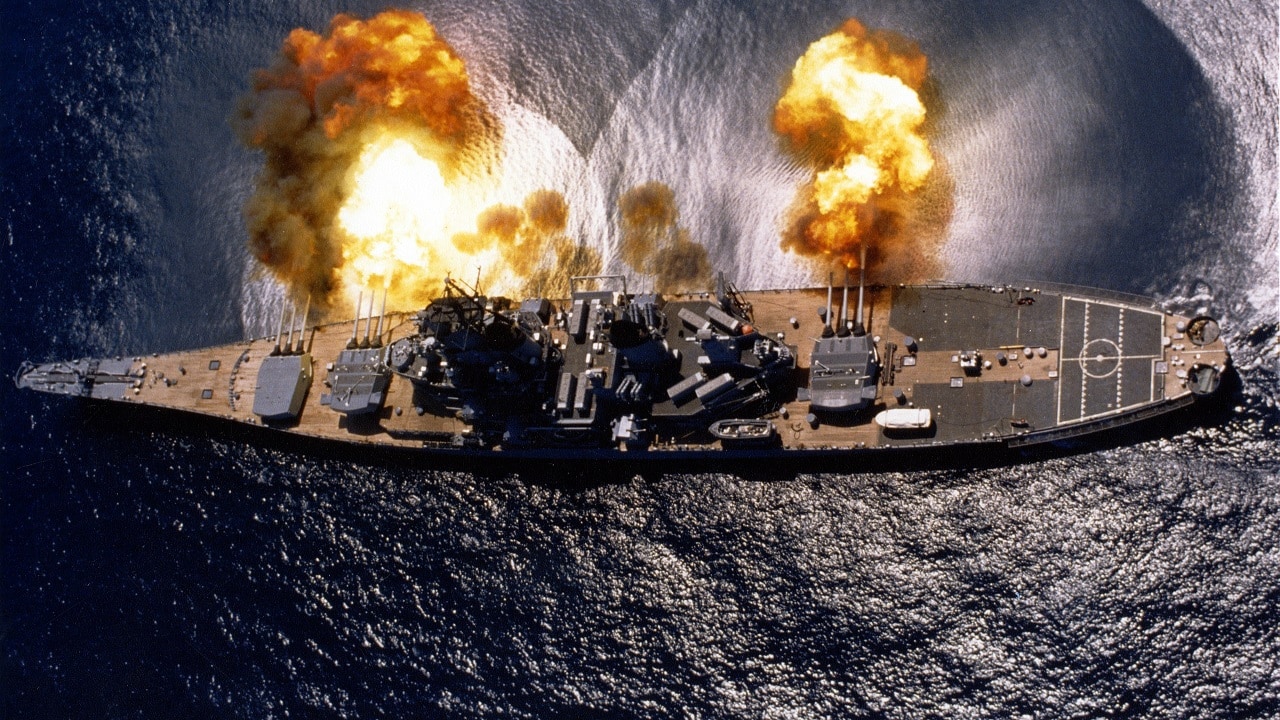What You Didn’t Know About the Iowa-class Battleships – During the interwar era, the United States Navy put much emphasis on the construction of aircraft carriers, yet didn’t neglect battleships. In the late 1930s three new classes of fast battleships emerged: North Carolina in 1937; South Dakota in 1938; and of course the Iowa-class in 1939. The latter were to be the final class of battleships ever constructed for the U.S. Navy.
With a displacement of 45,000 tonnes (40,823 tonnes); a length of 887 feet and three inches; a beam of 108 feet, two inches; and a draught of 37 feet, two inches; the Iowa-class was also the largest battleship to see service with the U.S. Navy.
Here are some other facts about the Iowa-class.
Six Were Planned
The U.S. Navy originally called for six planned Iowa-class battleships, which were authorized in three batches of two. The first two ships, USS Iowa (BB-61) and USS New Jersey (BB-62) were authorized in Fiscal Year 1939 (FY3), and the contract was signed on July 1 1939. They were laid down in June 27 and September 16, 1940, respectively.
The next pair, which included the USS Missouri (BB-63) and USS Wisconsin (BB-64), was part of the FY41 budget – and they were ordered on June 12, 1940 and were laid down on January 6, 1941, and January 25, 1941, respectively.
Two additional ships were ordered – USS Illinois (BB-65) and USS Kentucky (BB-66) – but canceled before completion. The former’s hull remained as a parts hulk until she was broken up in 1958, while various proposals were made to complete BB-65 as a guided missile battleship. That plan was finally abandoned due to cost concerns as well as the rampant evolving missile technology, and Kentucky was sold for scrap at the end of the 1950s.
An Aircraft Carrier?
Each of the Iowa-class battleships was designed to carry three floatplanes for scouting and gunfire spotting. The warships had been built with two quarterdeck catapults, which were removed during the Korean War. Following a refit, the Iowa-class carried helicopters instead.
Armor and Superstructure
The battleships were the most heavily armored U.S. warships ever constructed, and were designed to survive ship-to-ship combat with enemy ships armed with 16-inch (406mm) guns. The armor belt was inside the hull, and was 12.1 inches at its thickest. The turrets had 19.7-inches (500mm) of armor, while the decks were plated with 7.5-inches (190.50mm) of armor.
The Iowa-class battleships have often been described as “handsome” vessels. The ships’ design included a clipper bow and long foredeck, which had a graceful sheer. Each had two large funnels and tall tower foremast, and were later fitted with a tripod foremast after the Second World War.
Heavy Hitters
The ships were armed with nine 16-inch (406mm) main guns in three triple turrets, and secondary armament included twenty 127mm (5-inch) guns. The Iowa-class featured an entirely new turret design, which save almost 850 tons in weight, yet proved more effective in targeting enemy positions.
Major Effort
In total, it took 3,432,000 man-hours – more than 206 years of draftsman hours – to complete the final design for the Iowa-class battleships. The total completed plans reportedly weighed 175 tons, 30 inches in width, and are 1,100 miles long when laid out.
They Could Fit Through the Panama Canal
While the designers set out to create the finest battleship possible, there were some important design considerations and one of those was that the ships could pass through the Panama Canal. That mean the ships could have a beam no wider than 116 feet (33.55meters). Yet even with their massive size, the ships were still capable of making well over 30 knots and thus able to escape the U.S. Navy’s aircraft carriers.
World War II Ended on One
The Iowa-class was designed and built to help ensure victory against Germany and Japan, so it is fitting that it It was aboard the USS Missouri, where in September 1945 the Empire of Japan officially surrendered and ended World War II.
Every One Built is Still Here
Two of the six-planned Iowa-class battleships were canceled and scrapped, but the four completed battleships of the class had each been upgraded during the Cold War and returned to active duty on multiple occasions. Even as the ships have now been decommissioned – likely for a final time – the Iowa-class is unique in that all of the completed vessels have been preserved as museum ships at Pearl Harbor, Hawaii (USS Missouri); Los Angeles, California (USS Iowa); Norfolk, Virginia (USS Wisconsin); and Trenton, New Jersey (USS New Jersey).
Now a Senior Editor for 1945, Peter Suciu is a Michigan-based writer who has contributed to more than four dozen magazines, newspapers and websites. He regularly writes about military hardware, and is the author of several books on military headgear including A Gallery of Military Headdress, which is available on Amazon.com. Peter is also a Contributing Writer for Forbes.

